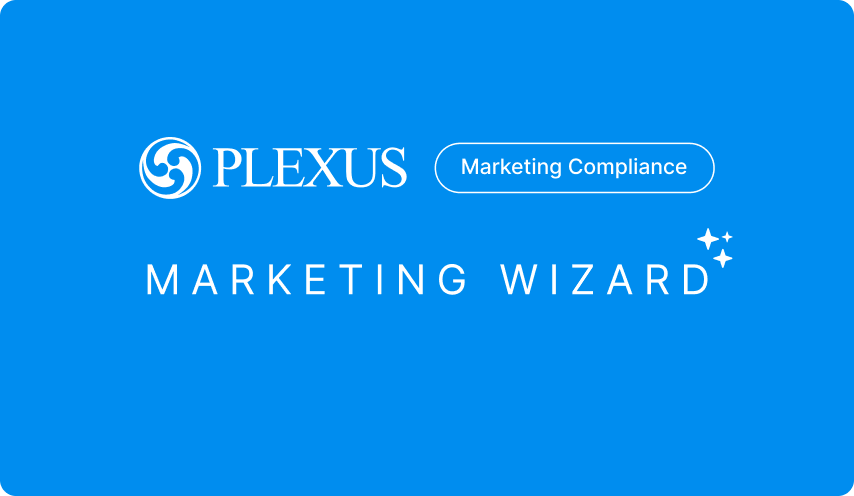Insights: Ad Standards community perception research 2024
Ad Standards recently published their Community Perception Research 2024 report, capturing a snapshot of the Australian public’s sentiments towards advertising.
Plexus Team
October 18, 2024

or

Guaranteed compliance for your next competition, sorted.
Plexus Promotion Wizard offers end-to-end legal support for competitions & promotions. Custom T&Cs and the right permits without any hassles, 90% faster and half the cost of traditional legal firms.
The general population is becoming more aware and perceptive of their exposure to advertising and are likely to question its motives. A common theme among these opinions is the consideration of changing societal norms and a preference to perceive community standards reflected in the advertising.
Ad Standards is the organisational body working alongside AANA that creates codes of conduct for advertisers to self-regulate their marketing material. Here are the salient points from their latest qualitative research.
Key findings
-
Australians are exposed to advertising across multiple physical and digital platforms.
-
75% of Australians believe advertising should reflect community standards on topics, including the use of language and violence.
-
Gambling and misleading or deceptive advertising are the most concerning types of advertising.
-
Potentially offensive content being presented in humorous or clever advertising is more likely to be overlooked and accepted.
-
66% of Australians were most likely to discuss an offensive commercial with friends and family, rather than lodge a formal complaint.
The five highest exposure channels
-
Websites
-
Social Media
-
Free-to-air television
-
Radio
-
Subscription services
The five most concerning advertising categories
-
Gambling advertising
-
Misleading or deceptive advertising
-
Use of sexual appeal or nudity
-
Exploitative or scary content
-
Advertising to children
Only 7% of respondents did not express concern about the advertising they were exposed to.
In 2023, the federal Murphy Inquiry published its findings on harm caused by online gambling and included a slew of recommendations, including banning gambling advertising. In light of this report, and calls by the Grattan Institute that “gambling reform is a safe bet”, no major changes have been made to gambling advertising yet.
Do the Australian public trust advertising?
There is general distrust of advertising, with 38% of respondents expressing doubt compared to the 26% that held trust. People aged 25 – 49 and of CALD (culturally and linguistically diverse) background were generally more trusting of advertising, while people aged 50+ and of non-CALD background had lower trust.
The majority of respondents – 75% – agreed that advertising should be reflective of community standards on topics such as violence and alcohol. Females aged 50+ were the highest proportion of respondents to express sentiments about this. Comparatively, males aged 16 – 24 were less concerned about the advertising content they were exposed to.
How does the Australian public feel about language in advertising?
While people are exposed to a wide range of language – especially varying degrees of profanity – in everyday life, most respondents believed that advertising should enforce higher standards. Many were aware that everybody has different tolerances for potentially offensive language, and that unregulated use in advertising could inadvertently normalise and desensitise audiences, particularly children. However, respondents were also cognizant of the fact that standards about language change over time and its usage should reflect current attitudes and views.
To this end, the report found that the public had drawn clear “lines” about the acceptability and offensiveness of certain words and phrases. The words “bugger”, “bloody” and “crap” were generally considered acceptable to most people; there was a longer list of unacceptable words.
Determining the acceptance of language in advertising
The research found that people were able to decide whether language was acceptable or unacceptable, but there was nuance to determining that. Various considerations influenced the perception of language and helped define the aforementioned “lines” of acceptability:
-
Offensiveness: the most influential factor in the acceptance of language.
-
Tone: words can be acceptable or unacceptable depending on the way they’re conveyed, for example, in a light-hearted or aggressive tone.
-
Context: the situation in which language is used relative to personal experience can also influence the appropriateness of the words used.
-
Intention: if audiences perceive the use of strong language in advertising to be deliberate for shock value, they are more likely to perceive it as a lazy tactic.
Guaranteed compliance for your next competition, sorted.
Plexus Promotion Wizard offers end-to-end legal support for competitions & promotions. Custom T&Cs and the right permits without any hassles, 90% faster and half the cost of traditional legal firms.

How does the Australian public feel about violence in advertising?
Audience exposure to violent and/or scary content was generally low, and only a small percentage of people regularly consumed this type of content. Violent content was mostly consumed via movies and TV shows, followed by online content, video games and printed material.
When viewed in isolation, acts or outcomes of violence portrayed in advertising were generally more acceptable, but there was a broad spectrum of acceptance depending on the type of violence.
The five most accepted forms of violence depicted in advertising
-
Slapstick
-
Outcomes of Violence (black eye, bandages, misery, etc)
-
Fantastical, unrealistic violence
-
Blood and gore (when depicted in community safety messaging)
-
Animated violence
While the depiction of numerous forms of violence was likely to be more acceptable, respondents drew a fairly clear line where they found it unacceptable. This included aggressive behaviour, intimidation and animal cruelty.
When it came to determining what constitutes acceptable depictions of violence in advertising, people considered various questions:
-
Could it desensitise audiences to violence or normalise exposure?
-
Is a power imbalance being portrayed?
-
Is the violence intentional or unintentional?
-
Is the violence gendered?
-
Is the violence too graphic?
-
Is there an aggressor and/or victim?
Besides these considerations, the major factors that influenced the acceptability of violence in advertising included the purpose of including violent content and the overall messaging of the advertising. For example, violence was seen to be acceptable in community messaging, which is why it was one of the most accepted forms of violent content. Violence used within reason in a humorous context was also more acceptable, which was reflected by slapstick violence being the most acceptable form of violence in advertising.
Is the public aware of ad standards?
Marketers and advertisers should be acutely aware of Ad Standards, but the general public is less likely to be. The report found 56% of respondents had prompted awareness of Ad Standards, while 43% had never heard of it.
Similarly, 50% of respondents had definite awareness of advertising rules and a further 46% having some knowledge of their existence. In any case, 89% considered Ad Standards to be an important factor in regulating advertising.
However, 66% were more likely to simply talk about an offensive ad with their friends and family than to report the ad or lodge a complaint to Ad Standards or the advertiser. That said, 34% were inclined to make a formal complaint to Ad Standards.
The key factors influencing how audiences determine ad appropriateness
-
Audience control: respondents wanted to have control over their exposure to advertising, such as being able to avoid or skip them. This, of course, is more difficult with out-of-home advertising such as billboards, which some respondents considered to present risk to children being exposed to inappropriate content.
-
Influence on children: respondents who were parents and not both expressed concern over the advertising material children are exposed to, as they are less likely to be capable of discerning context. Repeated exposure to potentially offensive material could lead to desensitisation or normalising negative behaviour, which would make it difficult for parents and authoritative figures to instil positive behaviour and attitudes.
-
Tone: Light-hearted and humorous content is more likely to be accepted by audiences, even if some of the topics, language and imagery might be close to the “line”.
Understanding the nuance of advertising material
Ad Standards regularly publish rulings on advertising complaints, which are collated monthly on Plexus. These reports can help advertisers and the public alike better understand the considerations that need to be made when publishing marketing material.
The reality is that even seemingly innocuous or compliant advertising may still attract complaints by conservative or sensitive viewers, as evidenced by the numerous complaints that Ad Standards dismisses. The ever changing state of society and its values requires flexibility from marketers, advertisers and audiences to ensure reasonable regulation is maintained with minimal compromise to creativity and commercial success.
Read the full Ad Standards Community Perception Research 2024 report here.
Plexus Team
We’re the Plexus Team - part tech nerds, part legal innovators, passionate about helping in-house legal teams work smarter.
Expert-reviewed, compliant T&Cs in under 24 hours.
Enter your details to start building your terms and conditions brief in minutes.
Related resources
Don't miss out on Perspectives by Plexus each month
Legal news, innovation and insights delivered straight to your inbox.











